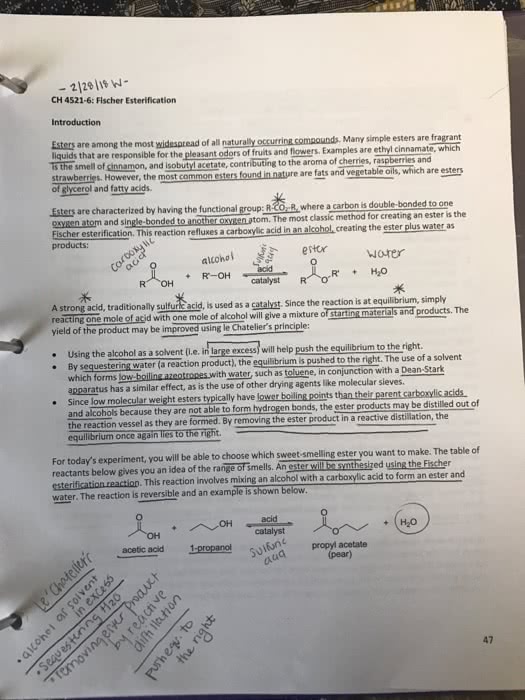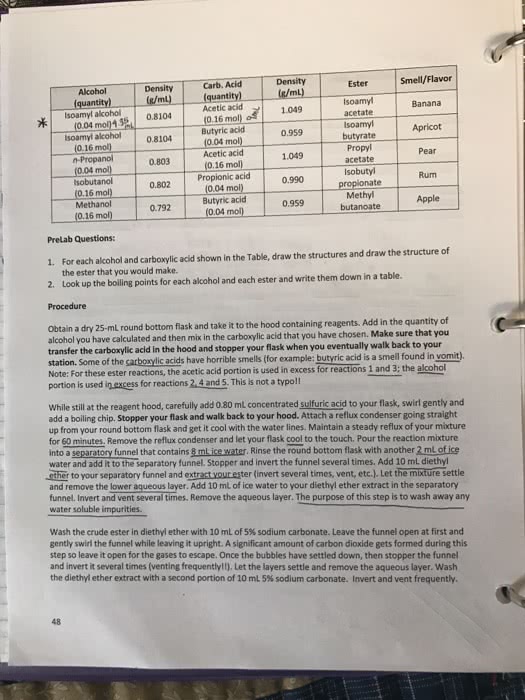In a fischer esterification, a chemical known as an alcohol (i.e. ethanol) is reacted with a chemical know as a carboxylic acid (i.e. acetic acid) to form an ester (i.e. ethyl acetate) and water (H2O). This reaction is shown below. The equlibrium constant for this reaction was found to be 4.1 at room temperature when the reaction is carried out in the solvent dioxane. (Note: Water is not the solvent in this reaction)
(a) A student begins with 1.0 mole acetic acid, 9.0 moles ethanol, and 1.5 moles H2O in enough solvent to form 2.0 L solution. No ethyl acetate is inititally present. What will the concentration of each of the the reactants and products be when the solution reaches equilibrium? (Do not round until the end of the problem.)
(b) In Fisher esterifications, a device known as a Dean-Stark apparatus is often used to remove water from the reaction. Why would one want to use such a device?
In a fischer esterification, a chemical known as an alcohol (i.e. ethanol) is reacted with a chemical know as a carboxylic acid (i.e. acetic acid) to form an ester (i.e. ethyl acetate) and water (H2O). This reaction is shown below. The equlibrium constant for this reaction was found to be 4.1 at room temperature when the reaction is carried out in the solvent dioxane. (Note: Water is not the solvent in this reaction)
(a) A student begins with 1.0 mole acetic acid, 9.0 moles ethanol, and 1.5 moles H2O in enough solvent to form 2.0 L solution. No ethyl acetate is inititally present. What will the concentration of each of the the reactants and products be when the solution reaches equilibrium? (Do not round until the end of the problem.)
(b) In Fisher esterifications, a device known as a Dean-Stark apparatus is often used to remove water from the reaction. Why would one want to use such a device?



